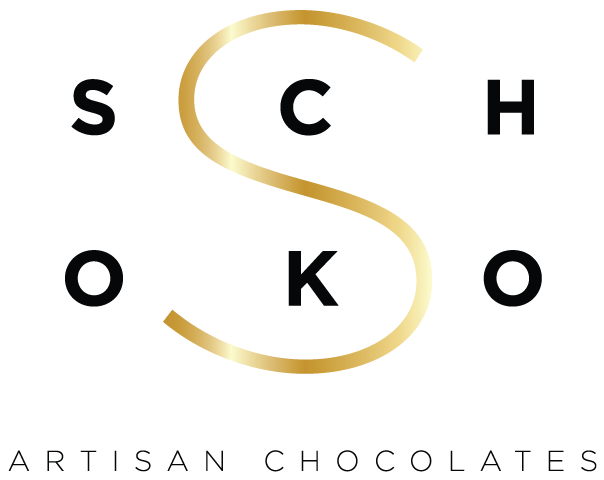This is because the chocolate has not been tempered properly.
‘What is tempering?’ Let me tell you…
Tempering is a process that encourages the cocoa butter in the chocolate to harden into a specific crystalline pattern, with consistently small crystals produced which maintains the sheen and texture for a long time. These crystals are called Beta crystals. Chocolate can form into six different crystals (wikipedia goes into more detail about the different crystals) and by proper tempering we manipulate the crystals so that we can form the most of the beta crystals. After tempering the chocolate we are left with a chocolate, that when set, is shiny, firm enough to tap with your fingernail, and will break with a sharp snap.
It is an important part of the production of top quality crafted chocolates, whether that is a chocolate bar, dipped truffle, moulded chocolates, bon bon’s, or pralines. Without going through this time consuming process, it can leave you with a number of problems: it may not ever set up hard at room temperature; it may become hard, but look dull and blotchy; the internal texture may be spongy rather than crisp; and it can be susceptible to fat bloom, meaning the fats will migrate to the surface and make whitish streaks and blotches.
In saying this, we cannot just go out and temper any old chocolate. It needs to be a top quality couverture chocolate. For example you cannot use the same chocolate that is in a chocolate bar in the supermarket, this chocolate is compound chocolate.
‘But the chocolate that I get from the supermarket can be shinny and snaps?’ you might be thinking, and yes, the producers of the large scale chocolate bars you find at the supermarket get their desired effect in shine, colour, texture and flavour by mixing compound chocolate with things like vegetable fats, sugars, solidifiers, and other chemical in order to produce the chocolate in a more economical manner as well as give it a long shelf life.
If we were to use compound chocolate for our products the finished chocolates won't look as polished and the shell may crack or look a bit waxy. There would also be ingredients in the chocolate that we don’t like, such as preservatives or chemicals to make the chocolate look shiny and beautiful. As craftsmen (and woman) of chocolate, who have a love and passion for chocolate, we don’t add any types of preservatives or chemicals to our products. This way we can stay true to the flavour, texture, smell and look of the chocolates and our fillings. But it also mean that the shelf life is only 2 months, for us this is acceptable, as we are regularly producing new batches every week, only enough for what we need. Besides, you won’t be able to stop yourself from eating them in less than a week no matter what size box you buy!
So, top quality couverture chocolate is what we need! There are a lot of producers in the world, each content has a slightly different tasting cocoa bean, and each producer has a slightly different preparation method. Therefore there are many slightly different flavoured couverture chocolate in the world. After a lot of searching, we have found one that not only tastes fantastic, but matches our values and uses 100% Cocoa butter, rather than thinning it down with vegetable oils in order to produce a cheaper product.
Now to the technical part; what’s involved in tempering chocolate?
Chocolate, not unlike the description of water/ice, once melted it is a liquid. Ultimately, you want it to turn back into a solid. But unlike water turning to ice, where nobody cares how or why it happens, we need to be concerned with how to properly harden the chocolate so that it has the best sheen, snap and taste and so that it doesn't bloom or separate.
When chocolate is melted and cooled, it can crystallize into any one of six different forms. Unfortunately, only one of these; the beta crystal, hardens into the firm, shiny chocolate that we want. But if you heat and cool chocolate without controlling the temperature the crystallisation of cocoa butter will result in crystals of different sizes (bad crystals) forming, and your chocolate will bloom. In order to control the crystallisation we need to heat the chocolate in order to melt all six forms of crystals. Then the chocolate is cooled to allow two of the crystal to form; One of these is the Beta crystals (the one we want), the other crystal tends to melt quite easily and we need to melt this to remove it, so the chocolate is then heated to eliminate the unwanted crystals, leaving just the Beta crystals. (After this point, any excessive heating of the chocolate will destroy the temper and this process will have to be repeated.) At this point the chocolate is ready to use and once moulded and allowed to set we are left with a finished product with a professional sheen, snap and taste that will not degrade over time.
Next time you are looking for quality chocolate, look for that a glossy sheen with no white or dull marks. Then when you bite into it, it should have a distinctive snap, not a crumble. It should melt in your mouth, not in your hands, and it definitely shouldn’t have any type of graininess in the texture. If your favourite chocolates don’t have the qualities of tempered chocolate, put ours to the test. Order chocolates today and let us know what you think - if they aren't perfect ill refund your money!


